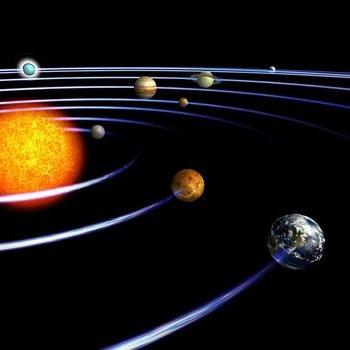According to the latest astronomical calculations, the mass of the Earth is 5.97 × 10 24 kilograms. Annual measurements of this quantity clearly show that it is not absolutely constant. Her data range up to 50 thousand tons per year. Earth is the largest in diameter, mass and density among the planets belonging to the earth group. Within the Solar System, our planet is the third from the Sun and the fifth in size among all the others. It moves in an elliptical orbit around the Sun at an average distance of 149.6 million kilometers from it.

As the mass of the Earth changes, there are many opinions regarding the trends of these changes. On the one hand, this value is constantly increasing due to collision with meteorites, which, burning in the atmosphere, leave a large amount of dust deposited on the planet. On the other hand, ultraviolet solar radiation constantly breaks down the water molecules in the upper atmosphere into oxygen and hydrogen. Part of hydrogen, due to its light weight, breaks out of the planet’s gravitational field , which affects its mass.

From the beginning of the 19th century until the last decades of the 20th century, the theory of the expanding Earth was very popular among scientists around the world. The hypothesis of an increase in the volume of the planet has led to the assumption that the mass of the Earth is also increasing. Over the entire existence of this theory, various scientists have proposed five options for its justification. Many well-known researchers, such as Kropotkin, Milanovsky, Steiner and Schneider, argued for the expansion of the planet with its cyclic pulsations. Dacillus, Myers, Klub and Napier explained this assumption by the constant accession of meteorites and asteroids to the Earth. The most popular theory of expansion was the assumption that initially the core of our planet consisted of superdense matter, which during evolution turned into normal material, causing a gradual expansion of the Earth. In the last 50 years of the last century, several prominent physicists, such as Dirac, Jordan, Dikke, Ivanenko, and Saggitov, expressed the view that the gravitational quantity decreases with time, and this leads to a natural expansion of the planet. Another hypothesis was the opinion of Kirillov, Neumann, Blinov and Veselov that the expansion of the Earth is caused by a cosmological reason associated with a secular evolutionary increase in its mass. Today a large amount of evidence has appeared that refutes all these assumptions.

The theory of an expanding planet, based on the fact that the mass of the Earth is constantly increasing, today completely lost its attractiveness. The international group, which included the best scientists of the world, did not finally confirm it, so today this concept can peacefully go to the shelf of scientific archives.
According to the conclusion of the group of geophysicists who conducted research using modern space tools, the mass of planet Earth is a relatively constant value. An employee of one of the scientific laboratories, U. Xiaoping, together with his colleagues published an article in which he stated that the recorded fluctuations in the radius of the Earth do not go beyond 0.1 millimeters (the thickness of a human hair) per year. Such statistical indicators indicate that the mass of the Earth does not change in values that allow us to talk about its expansion.